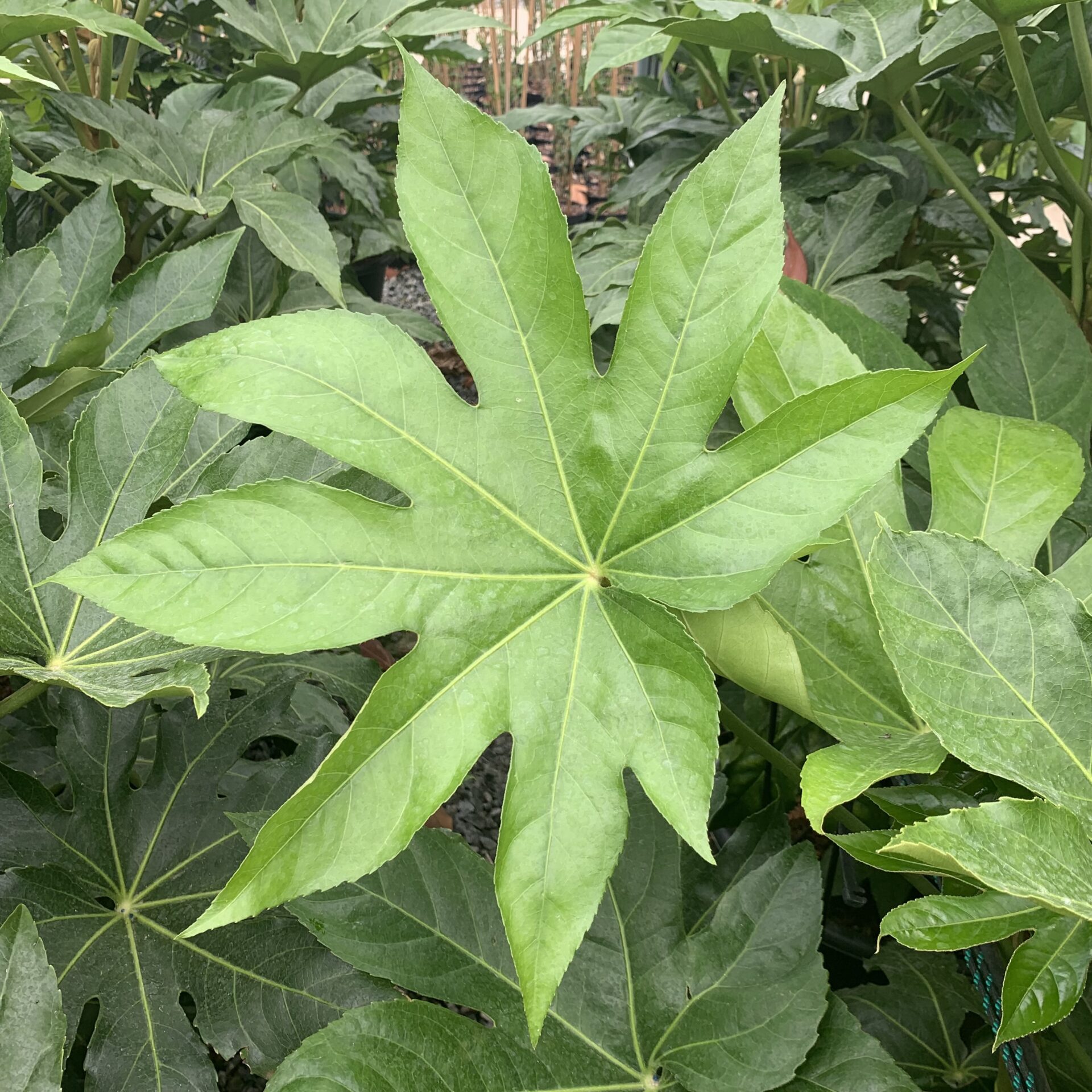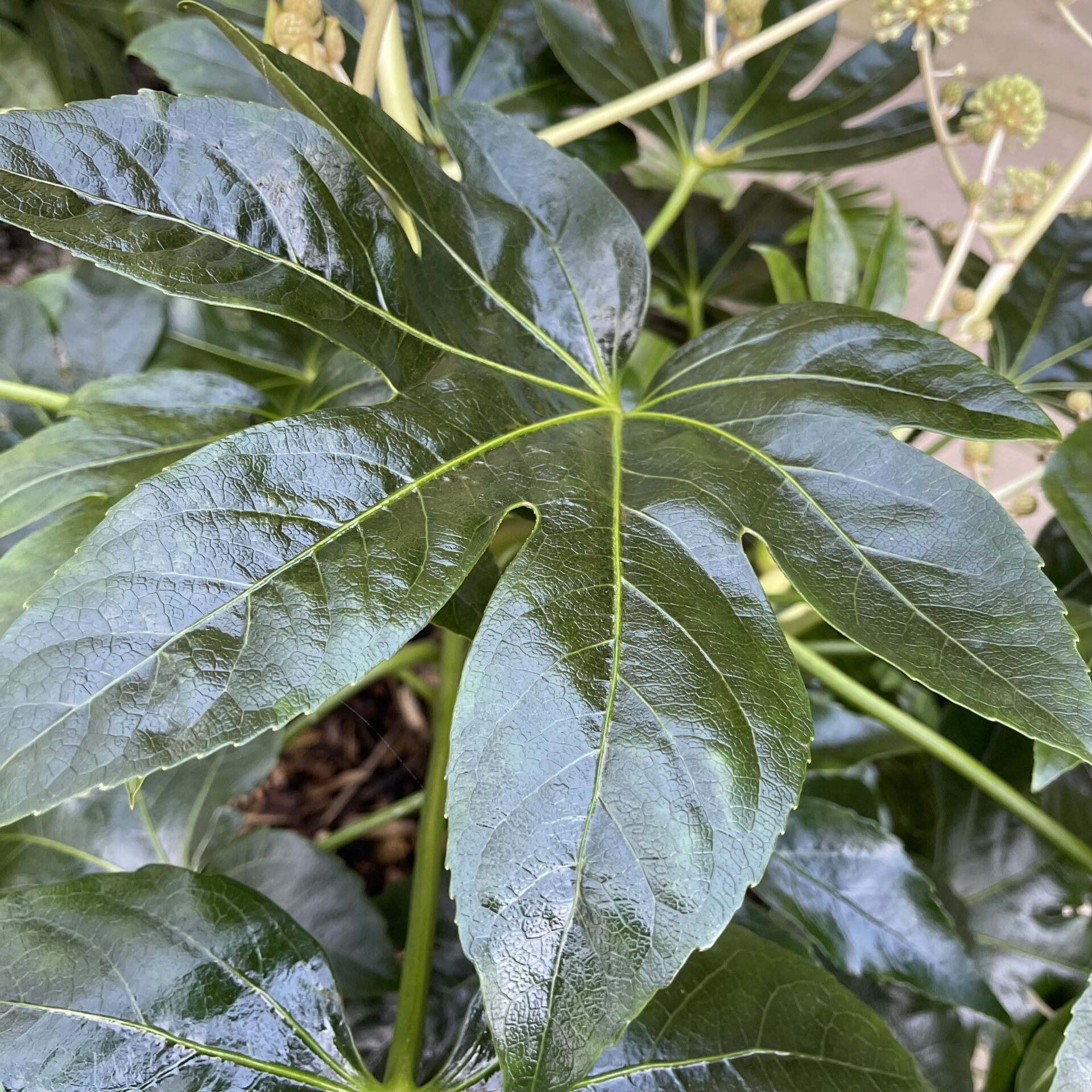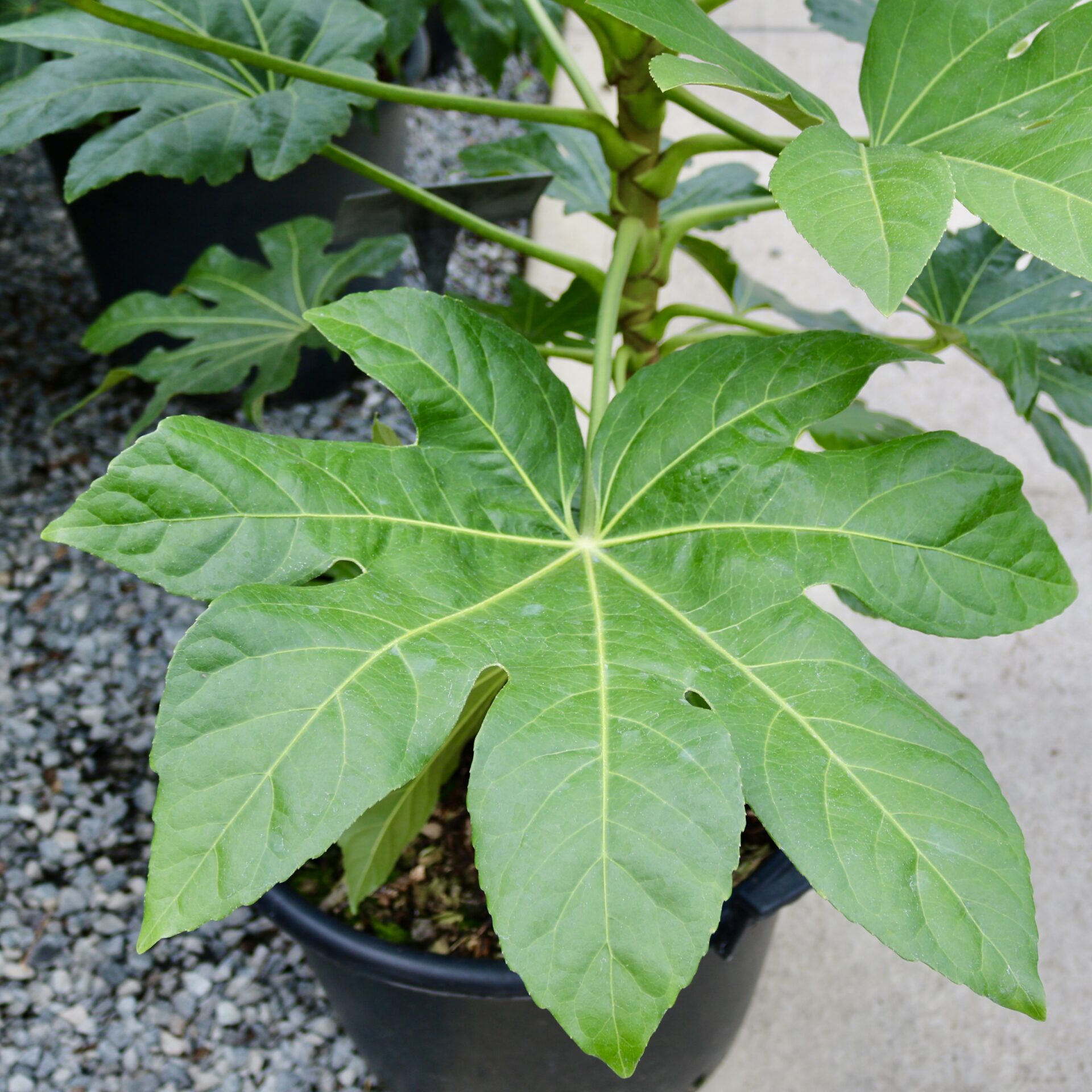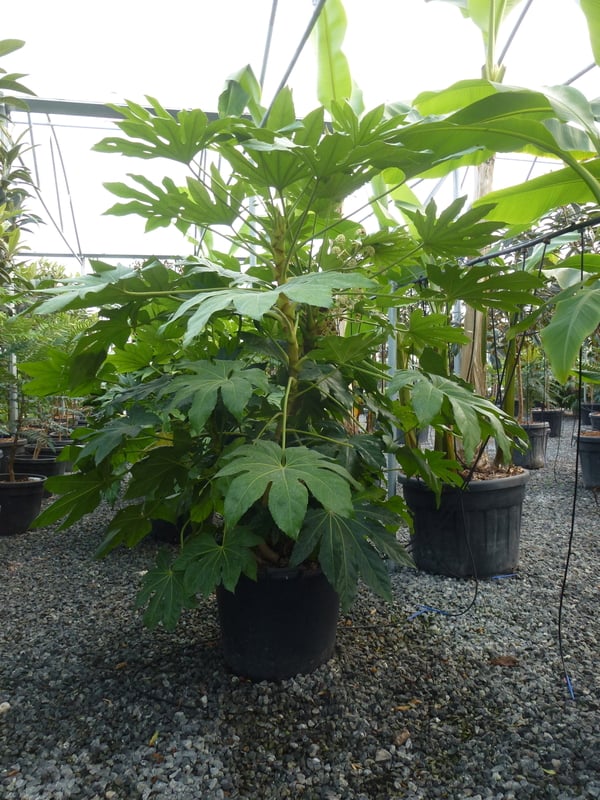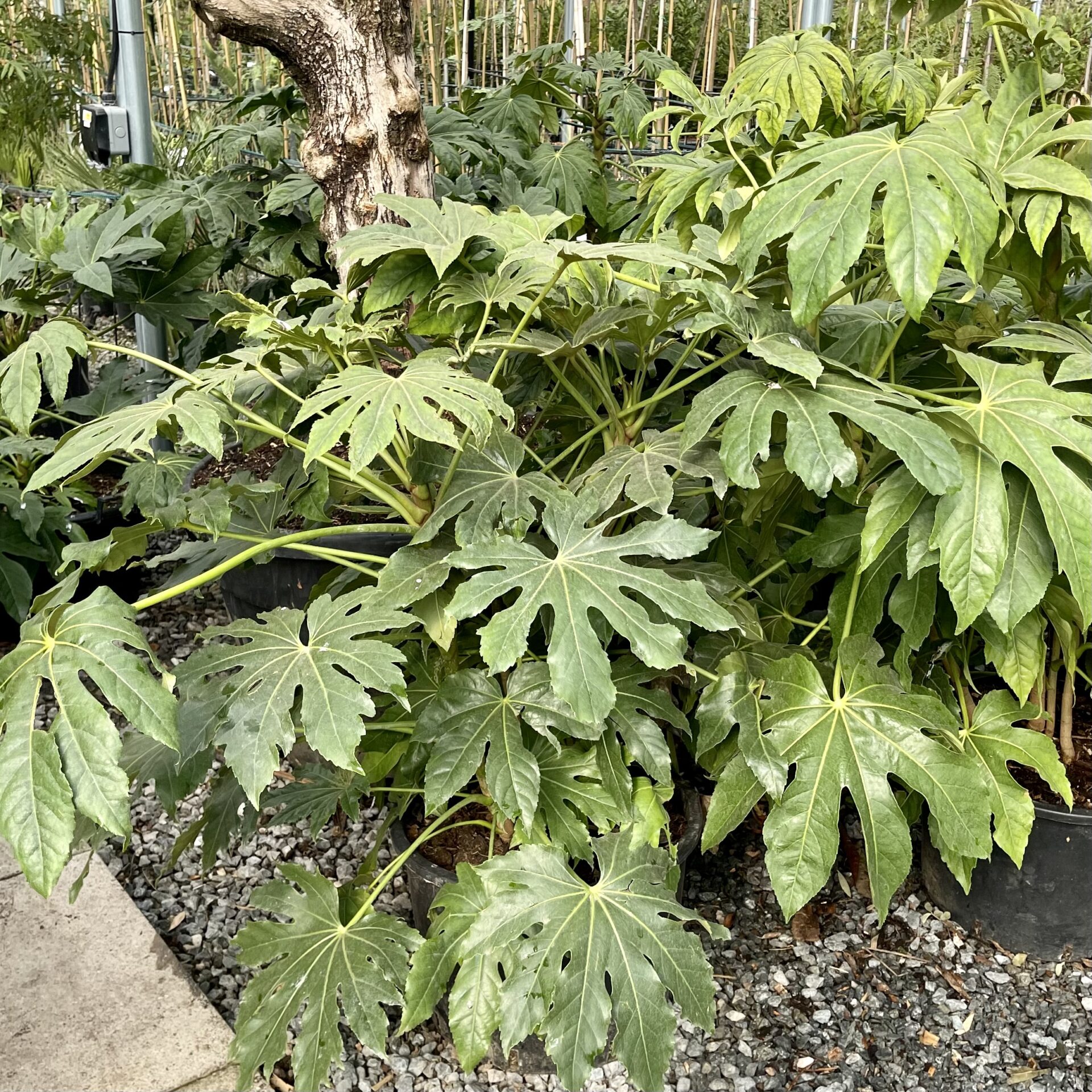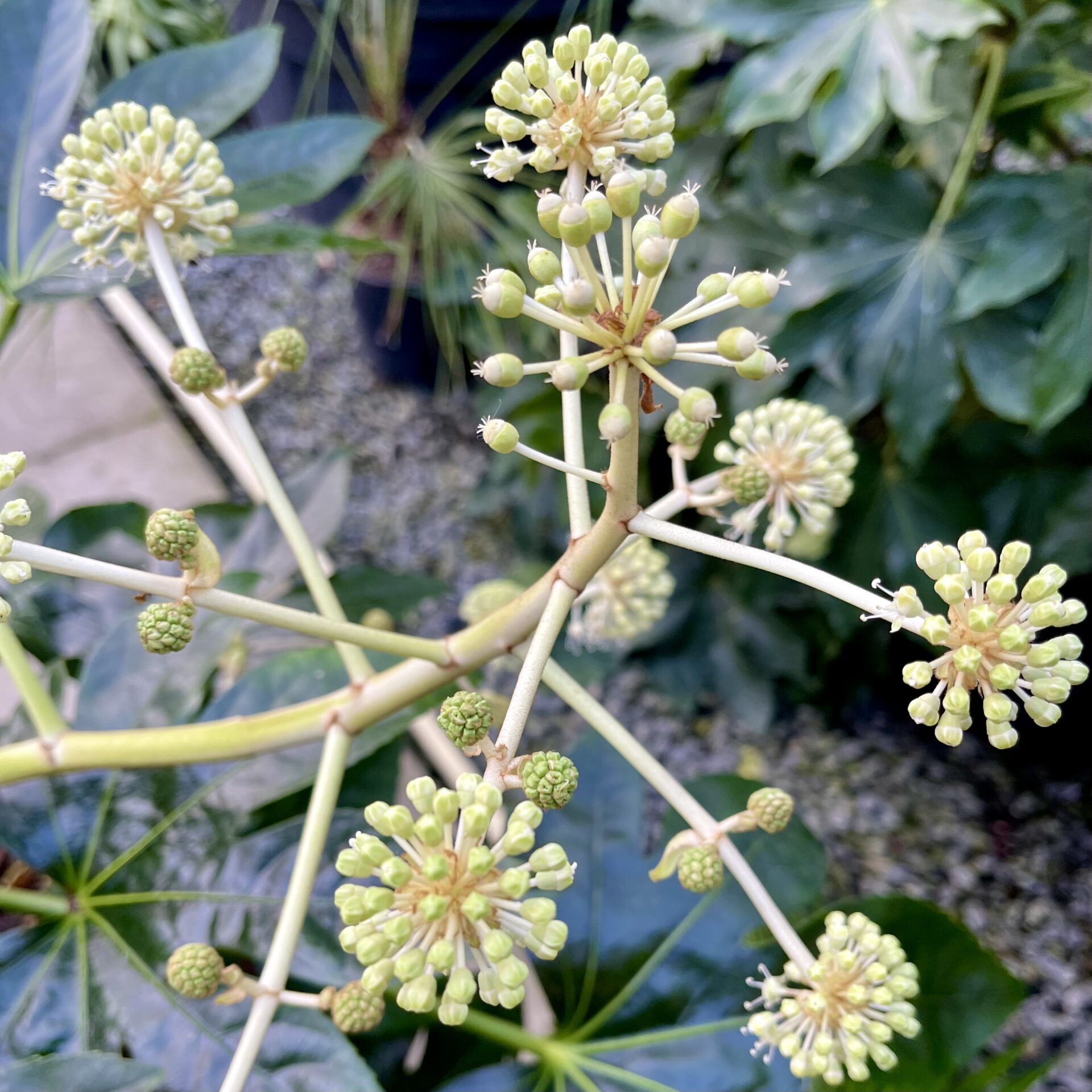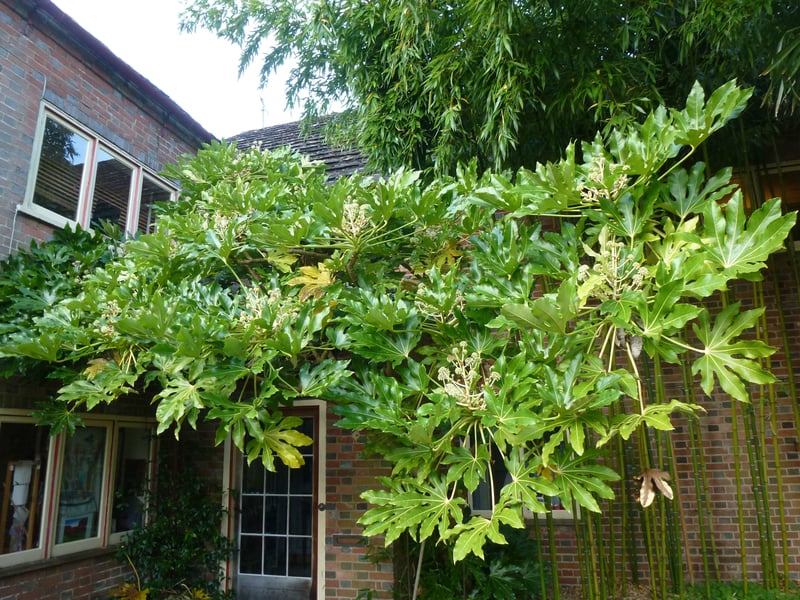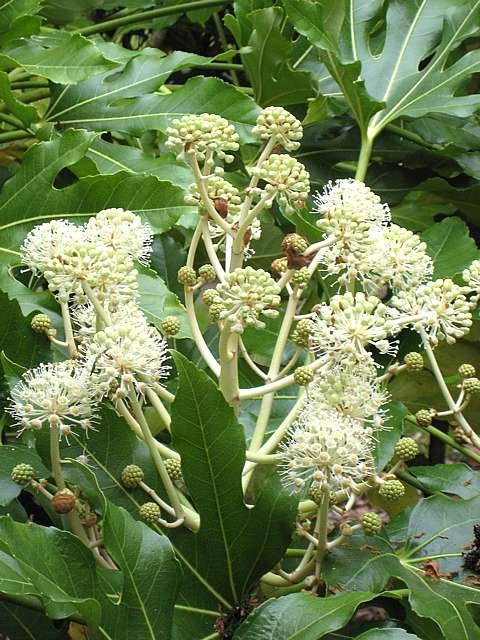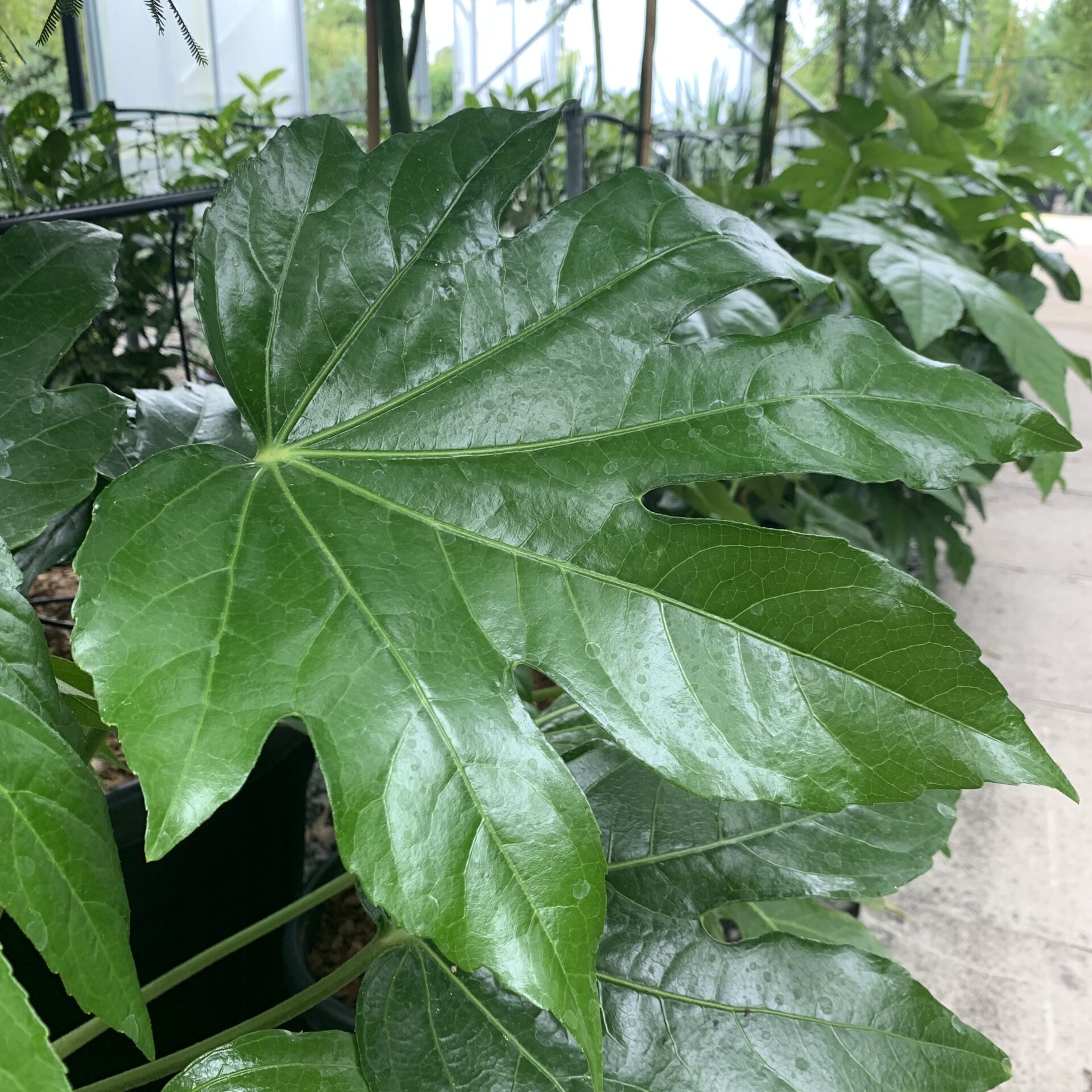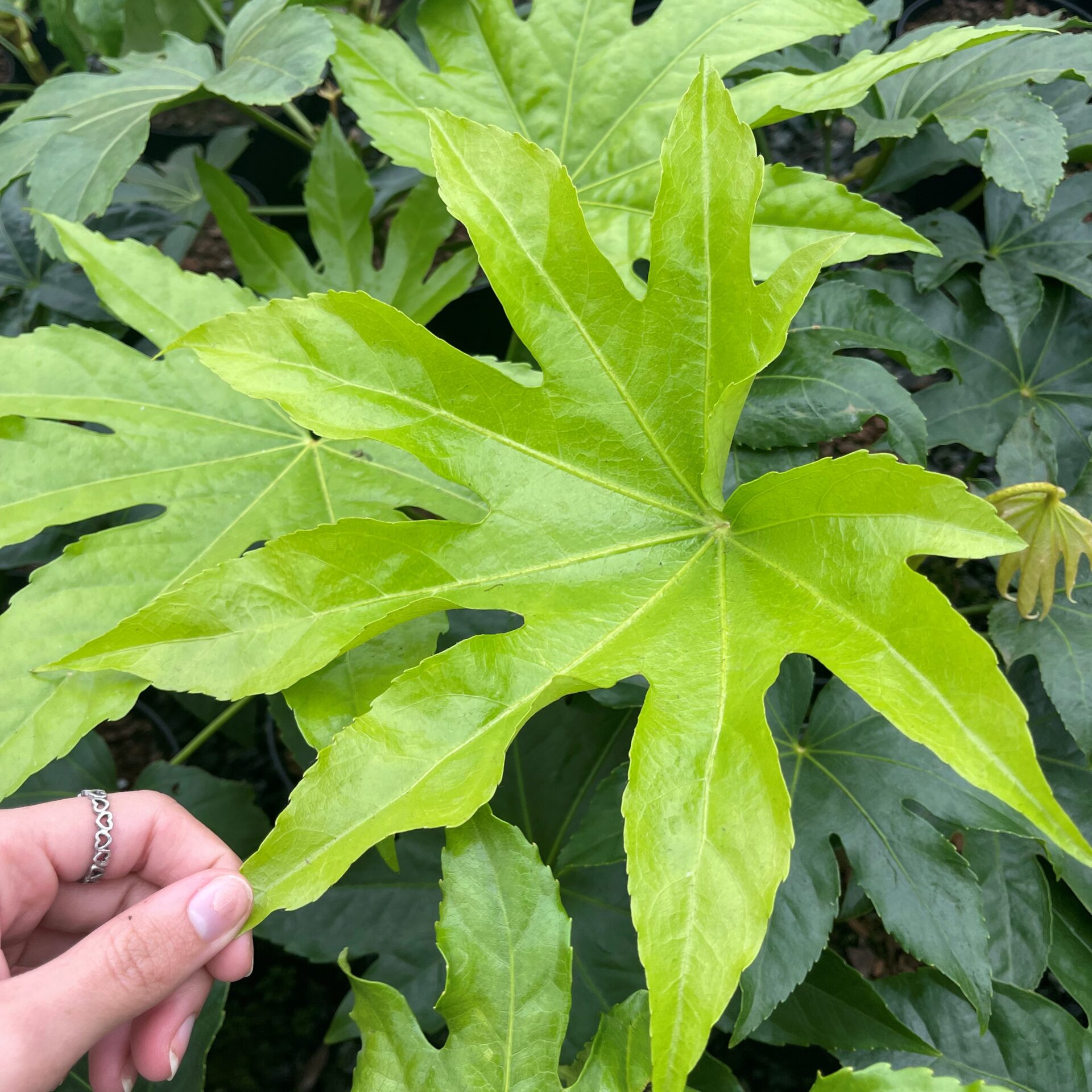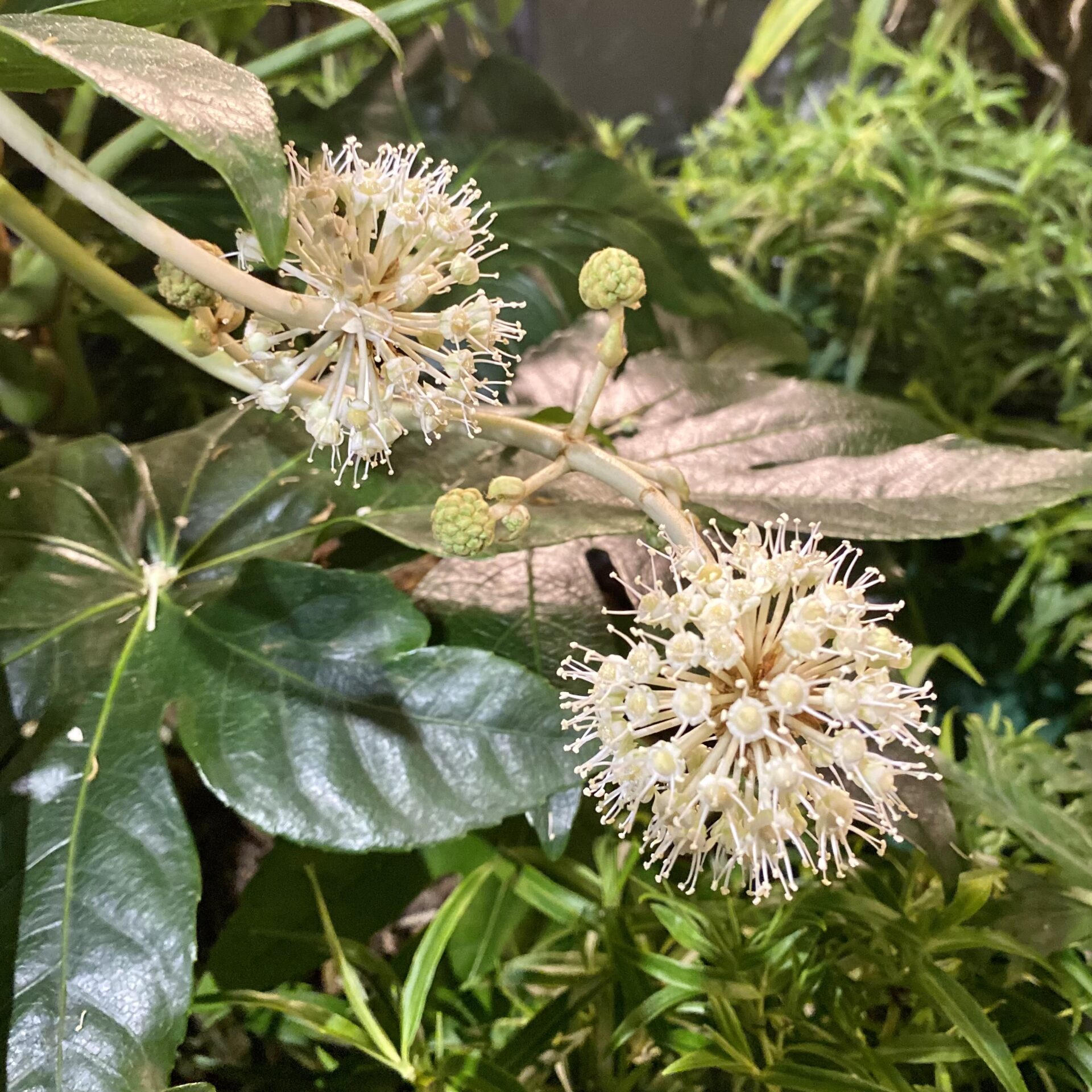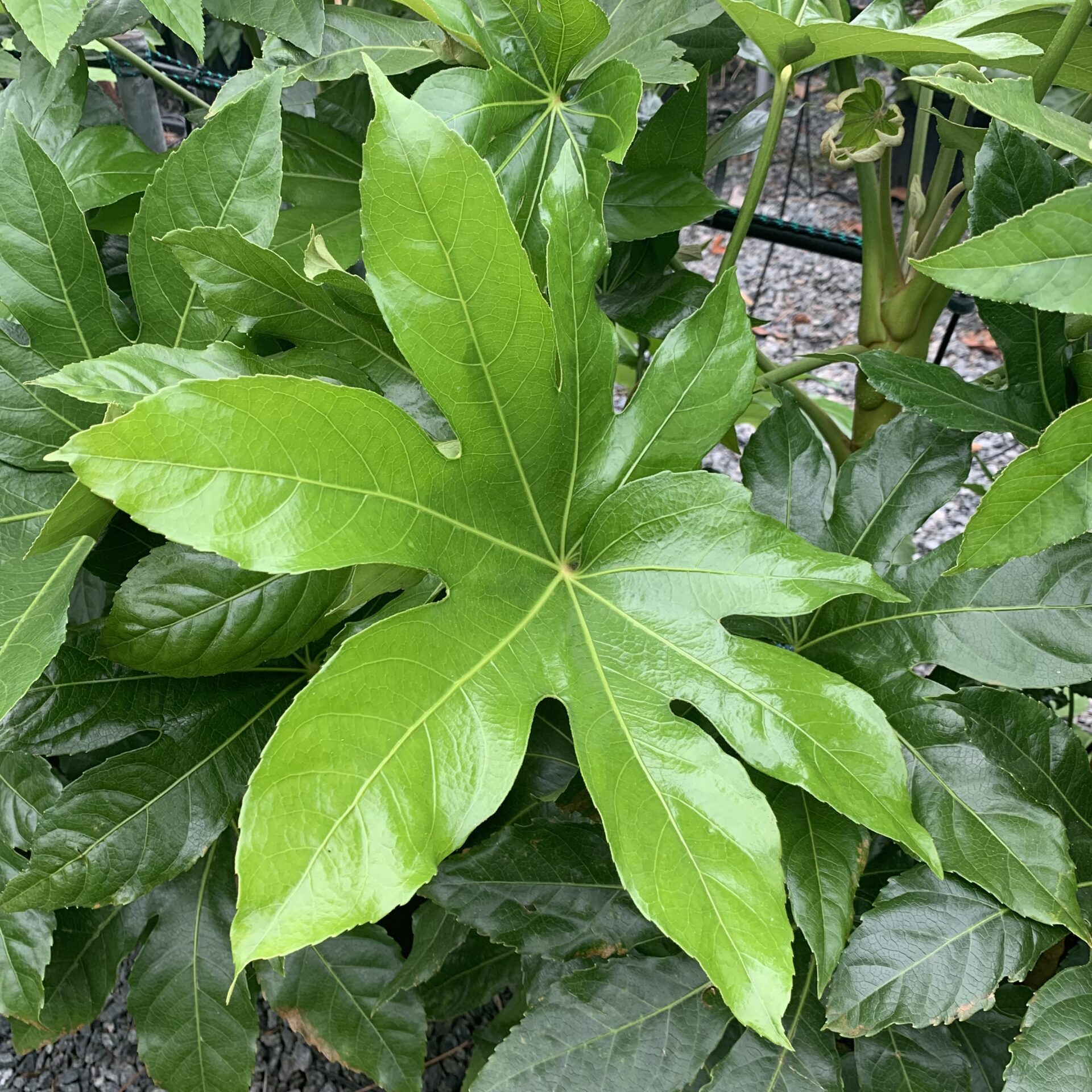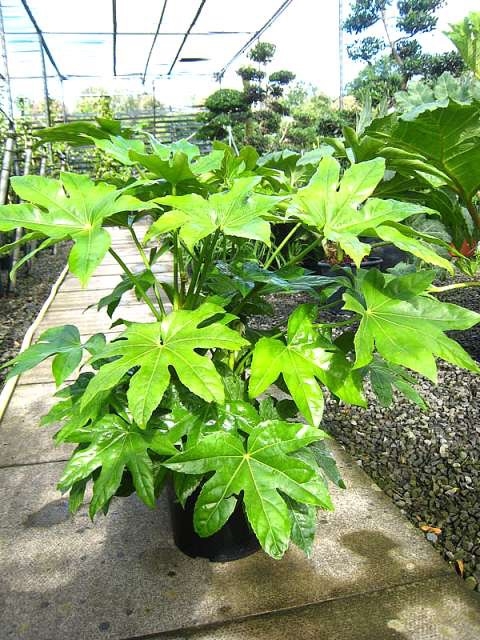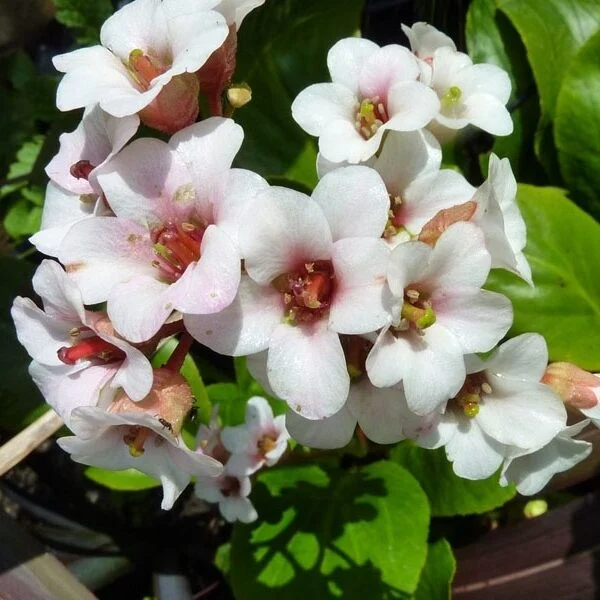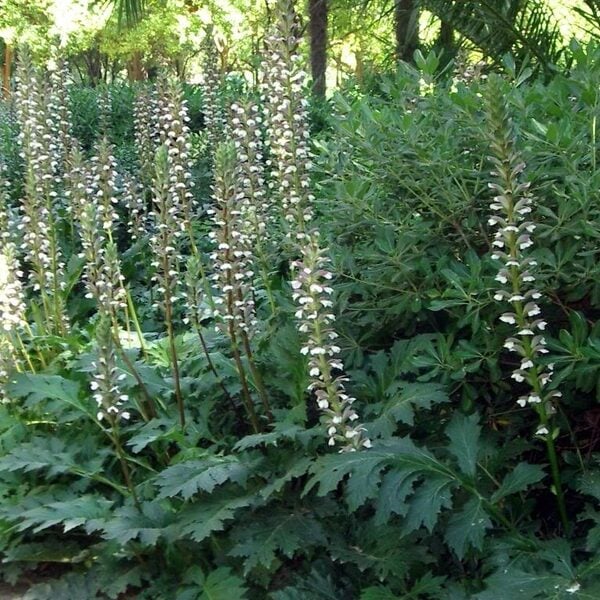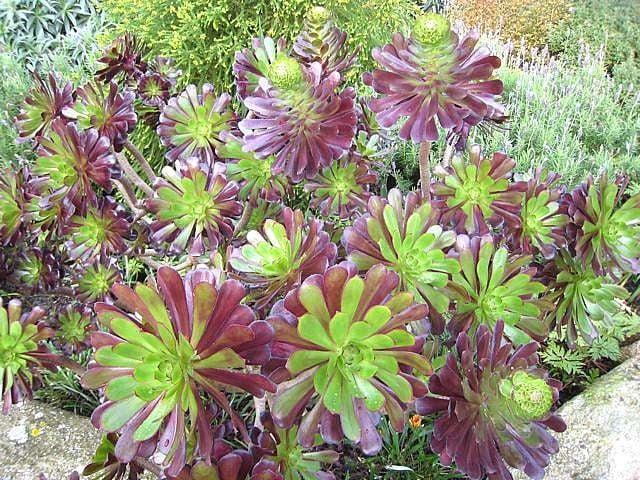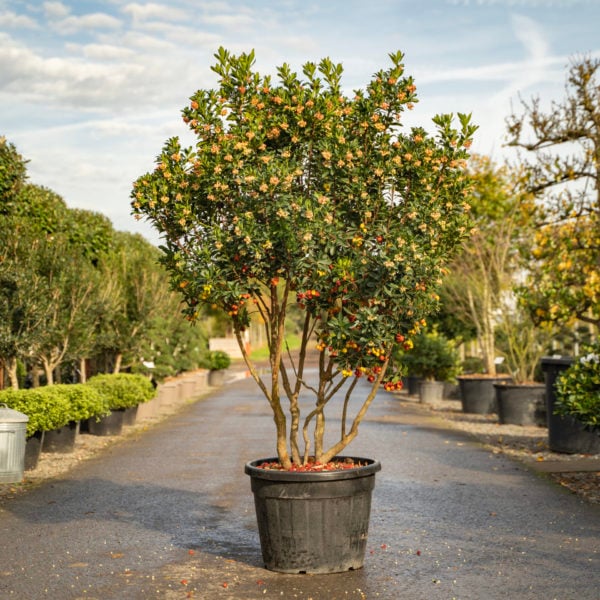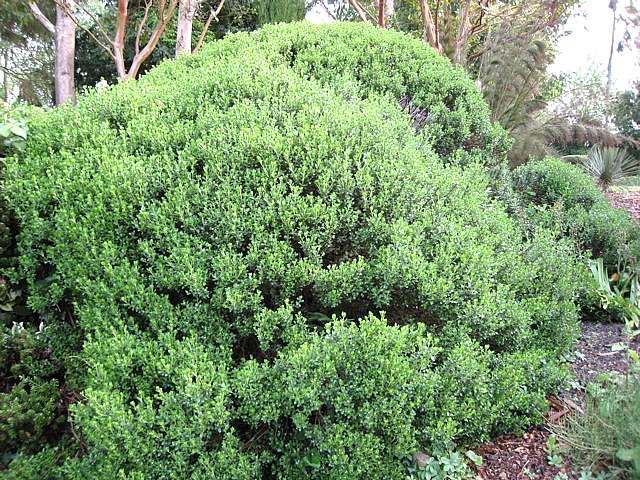Fatsia japonica
Well known evergreen exotic. Likes shade. Much versatility and opportunities for Creative Maintenance. To 15ft after 15 years. Can make it look like a Papaya. Please contact us for stock availability and sizes.

Hardiness level Green
The leaves go a bit yellow in direct sun. Best in shade. Impressive when pruned into a single trunked tree - looks a bit like a Papaya. Just a bit. Happy on any old soil but particularly happy on heavy clay soils, acid or alkali. Can reach 10ft or more and the same across after 20 years. Old leaves go yellow and then brown and hang off the branches. Not very pretty. Cut them off as soon as they discolour, leaving a 1" stub on the trunk. 10 days later those stubs will have fallen off. Great fun mucking about with these plants - hack, hew, train, snip and anything else you feel like. The results are (can be) most rewarding. In extreme cold (-4°c or below) these plants look absolutely terminal - almost black and very droopy. As the temperature rises, miraculously, they recover. It's a defence and should be ignored. If cold weather comes after a mild autumn, some young growth will be blackened by even a light frost. Just cut off the blackened leaves. It makes no difference to the plant in the long term.
Plants that come from Japan (the clue is in 'japonica') get in a bit of a muddle with our climate and frequently put on new growth at the wrong time. This is a good example. A couple of warm days in March and it thinks spring has arrived. Lovely new growth appears not realising that it's Britain with its treacherous climate. Two weeks later, it's -4°c and all that nice young growth is blackened and it has to start all over again. If we have a mild autumn, it thinks it's still summer and keeps growing. We get an early frost in November and the same thing happens. It's an inconvenience and is of no significance as far as the winter hardiness of the plant goes. Other susceptible plants are : Pieris, Aucuba, Eriobotrya, Daphniphyllum (from Korea - same thing) and Euonymus, to name a few.
They grow in spring and autumn rather than summer. Young growth is susceptible to attack by aphids - black fly in particular. Kill by rubbing off by hand if it doesn't make you feel sick - otherwise spray with a bug gun. Propagated by seed in Belgium.
Severe frost (-4°c or below) will give the leaves a glazed, pendulous look. It can look terminal but it's not. They recover wonderfully well as soon as the temperature rises.
Propagated by seed.
Additional Information |
|
|---|---|
| Soil Type | |
| Light | |
| Plant Type | |
| Continent of Origin | |
| Features | |
| Situation | Coastal, Mild City Gardens, Plants for Pots, Sheltered Garden |
| Flower Colour | |
| Hardiness | |




